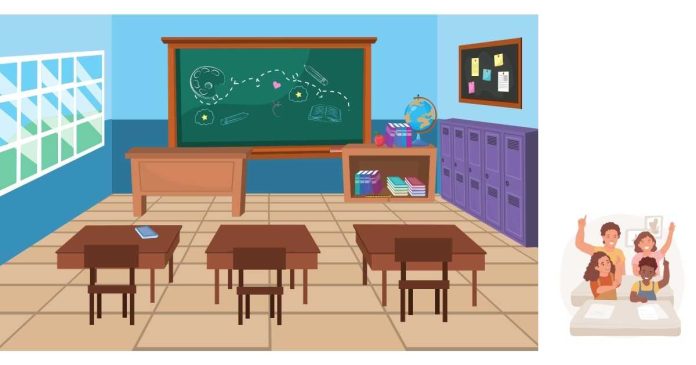When measuring the length of a classroom, the unit of measurement depends on the geographical location and the measurement system being used. Below are the details of the two most common units for measuring length:
1. Meters (m) — Metric System
- Usage: Commonly used in most countries around the world, especially in Europe, Asia, and many parts of Africa and Latin America, where the metric system is the standard.
- Definition: One meter is defined as the distance light travels in a vacuum in 1/299,792,458 seconds.
- Practical Example: A classroom length might be 8 meters, meaning the space from one end to the other measures 8 meters in total.
- Sub-units: Centimeters (cm) and millimeters (mm) are often used for more precise measurements. For instance, a classroom could be measured as 800 cm (8 meters), or 8,000 mm (8 meters).
- Advantages: The metric system is internationally standardized, making it easier to share measurements between countries without conversions.
2. Feet (ft) — Imperial System (U.S. customary)
- Usage: This system is primarily used in the United States, and sometimes in Canada and the UK for certain applications. Feet and inches are commonly used for measuring distances in everyday life.
- Definition: One foot is equal to 12 inches, and one inch is defined as exactly 2.54 centimeters. Therefore, 1 foot is approximately 0.3048 meters.
- Practical Example: A classroom length might be 30 feet, meaning the space from one end to the other measures 30 feet.
- Sub-units: Inches (in) are frequently used for smaller measurements, so a classroom might be 30 feet 5 inches long.
- Advantages: While the imperial system is less widely adopted internationally, it is the standard in countries like the U.S., making it useful in certain contexts, such as construction and interior design.
Other Commonly Used Units:
- Yards (yd): Occasionally used in measuring longer lengths in the imperial system, but less common than feet for classroom dimensions.
- 1 yard = 3 feet = 0.9144 meters.
- Example: A classroom might be 10 yards in length (equivalent to 30 feet or about 9.144 meters).
How to Measure Classroom Length:
- For Metric (Meters/Centimeters): A measuring tape or laser distance measurer is commonly used to measure the length of a classroom.
- For Imperial (Feet/Inches): Similarly, a measuring tape or a laser distance measurer can be used, but measurements will be recorded in feet and inches.
Conversions:
- Meters to Feet: 1 meter = 3.28084 feet.
- Example: A classroom 10 meters long would be about 32.81 feet.
- Feet to Meters: 1 foot = 0.3048 meters.
- Example: A classroom 30 feet long would be about 9.144 meters.
Considerations for Measuring:
- Room Shape: If the classroom is not a perfect rectangle, measurements might need to account for various dimensions (length, width, and height). Usually, length is measured as the longest dimension in a rectangular room.
- Purpose: The unit of measurement might change based on whether you’re measuring for architectural plans, furniture placement, or a general estimation.
In summary, meters (m) are most commonly used for classroom length globally, with feet (ft) being more common in the United States. Measurements in centimeters or inches may also be used depending on the level of precision needed.


